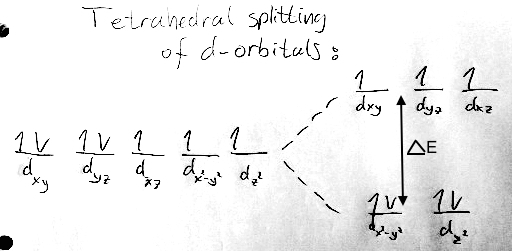Let us consider this qualitatively with crystal field theory (CFT). Co is a transition metal with $d^7$ configuration. CFT says that depending on the geometry of the metal complex, the d-orbital energies will split into different energy levels. If the ligands (in this case, the four $\ce{SCN-}$ ligands) align with certain orbitals, then the electrons in these orbitals will feel an increased repulsion due to the closeness of the ligands, and increase in energy. The orbitals in-between the aligned axes, will not feel this repulsion, and will not increase in energy. The splitting diagram might look something like this

There is an equation that relates the (splitting)
energy to wavelength:
$$
\Delta E = \frac{hc}{\lambda}
$$
From this equation, we see that if the splitting energy increases, wavelength will have to decrease, i.e. be shorter than before. This means a shift towards the violet region. As you say, $\ce{SCN-}$ is a strong ligand, meaning it leads to a rather high $\Delta E$. So we could say that $\ce{Co(SCN)_4^{2-}}$ is blue due to the high energy gap between the d-orbitals. Electrons are excited from one of the lower orbitals up to one of the higher orbitals. Upon de-exciting, light is emitted with an energy equal to $\frac{hc}{\lambda}$. This happens to be in the blue/violet region.
Weaker ligands would split the energy levels less, and the complex's color would therefore have a color closer to the red part of the visible spectrum.
Did this make it a little clearer?

